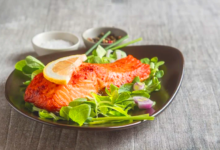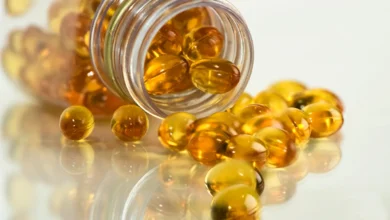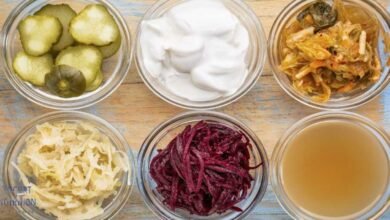10 Best High-Protein Pasta Options For a Satisfying Meal

People who are concerned about their carbohydrate intake or vegetarians who are looking for strategies to ensure that they are getting the appropriate amount of protein in their diet are not the only ones who should be aware of the significance of increasing the quantity of protein they consume in their diet.
Best High-Protein Pasta Options For a Satisfying Meal
The consumption of high-protein pasta, which is often fortified with plant proteins, is an excellent method for increasing the amount of protein you consume without sacrificing the pleasure of indulging in pasta on occasion.
Beans, peas, and lentils are examples of plant-based proteins that are included in many of the high-protein pasta variants that are discussed in this article. The Dietary Guidelines for Americans place an emphasis on nutrient-dense plant proteins.
Read More : Health Benefits of Almond Milk
Whether you want to boost your protein consumption for the purpose of growing muscle or just want to produce meals that are more nutritionally balanced and plant-based, you will be able to discover a high-protein pasta that is in line with your objectives.
Types of High-Protein Pasta
In comparison to regular pasta, high-protein pasta is a nutritional powerhouse that incorporates a greater quantity of protein. In a serving size of two ounces, traditional pasta, which is commonly produced with wheat flour, typically contains around seven grams (g) of protein.
It is necessary for pasta to contain at least twenty percent of the daily protein value per serving in order for a product label to state that it is “high-protein.” One serving contains a minimum of ten grams of protein, which is comparable to this amount.
It is possible that the phrase “high-protein” is not included directly on each and every variety of pasta in this assortment. All of them, on the other hand, contain at least ten grams of protein. Take the time to carefully review the labels on the ingredients and the nutrition data in order to pick the best possible option that satisfies both your tastes and your nutritional needs.
Soybean Pasta
Soybeans, which are recognized for their high-quality protein content and a multitude of health advantages, are the ingredients that are used to make pasta made from soybeans. When compared to the protein found in cow’s milk and eggs, which are often used as reference standards, the quality of the protein found in soy does not differ significantly.Significantly, a serving of soybean pasta has between 22 and 25 grams of protein, making it an excellent choice.
Generally speaking, soybeans are the sole ingredient that is listed on the label of soybean pasta; however, some producers incorporate water in their formulas.
Studies have shown that consuming soy protein may lead to an increase in both muscle mass and strength. There are further possible benefits associated with soybeans, including the alleviation of hot flashes, the delay of cognitive decline, and the promotion of cholesterol reduction. The researchers believe that these advantages are due to the nutritional components of soybeans, namely the amount of protein, polyunsaturated fat, and isoflavone (a chemical found in plants) that they contain.
Edamame Pasta
Edamame are really just soybeans in their green pods, and they are picked when they are around 80 percent mature. Pasta manufactured from edamame has a nutritional profile that is comparable to that of pasta prepared from soybean extract. In a serving size of two ounces, it contains 22-25 grams of protein.
The edamame is the only ingredient that is normally used in the preparation of this high-protein pasta. Mung beans or mung bean flour are sometimes added to edamame pasta by some manufacturers.
Chickpea Pasta
The nutty flavor of chickpeas, which are often referred to as garbanzo beans, is well-known, and they are used in a broad variety of culinary applications. Pasta made from chickpeas is another popular option for those who are looking for a high-protein pasta alternative. The primary component of this dish is either chickpeas or chickpea flour, depending on the recipe.
Tapioca, pea starch, or lentil flour are some of the additional components that may be used in the chickpea pasta produced by some companies. A serving size of two ounces may contain anywhere from eleven to fifteen grams of protein, depending on the brand.
In addition, chickpeas are loaded with essential minerals that are beneficial to one’s general health, such as magnesium, potassium, and iron. Consumption of chickpeas has a beneficial effect on the overall health of the intestines, as well as the control of blood sugar and cardiovascular health.
Bean Pasta
Black beans, lupin beans, and fava beans are some examples of the kinds of beans that are used in the production of different varieties of high-protein pasta. In addition, some pasta manufacturers may combine these beans. Tapioca starch, sunflower flour, and xanthan gum, which is an additive that helps to thicken and stabilize the product, are some of the other components that may be added to protein-based pasta made from beans.
Typically, the amount of protein that is included within this category ranges from 12 to 28 grams per serving size of 2 ounces.Moreover, beans are a source of fiber, which is an indigestible component found in plant foods and is essential for maintaining digestive health as well as controlling blood sugar and cholesterol levels.
Beans are a source of essential nutrients, including minerals and a variety of B vitamins (with the exception of B12), which are essential for maintaining good health. In addition to this, they include phytochemicals, which are nutrients that are found in plants. According to the findings of study, including beans into a plant-based eating pattern has the potential to enhance the health of the heart, digestive system, and metabolism.
Green Lentil Pasta
Plants belonging to the Fabaceae family include lentils, beans, and peas, among other members of the family. Consumable seeds that are shaped like lenses and available in a variety of colors are what they are.
The major component of green lentil pasta is often green lentil flour instead of other ingredients. There is a possibility that some brands may include additional components, such as quinoa flour, brown rice flour, or green pea flour. A serving size of two ounces of this green high-protein pasta has eleven to fourteen grams of protein.
As is the case with beans, lentils are loaded with a variety of minerals, fiber, and substances that are beneficial to one’s health, such as antioxidants. It has been shown via research that consuming lentils on a daily basis may provide protection against a variety of ailments, including diabetes, cancer, and heart disease.
Red Lentil Pasta
When it comes to red lentil pasta, red lentil flour is often the primary ingredient. However, there are other types that merely use water as an extra component. A portion of this red-colored high-protein pasta, which is two ounces in size, has a significant fourteen to sixteen grams of protein.
As is the case with green lentil pasta and all of the other varieties of pasta that have been mentioned in this article, red lentil pasta can be found in a broad variety of forms to cater to your individual tastes in terms of cuisine.
Green Pea Pasta
Green peas, also known as garden peas, are another favored legume option for the production of high-protein pasta. They are easily identifiable by their tiny, round forms. Either green peas or green pea flour are used in the production of green pea pasta. There are certain brands that may include other components, such as water or garlic powder. Every two-ounce dish of green pea pasta has eleven to twelve grams of protein.
In a manner similar to that of other legumes, peas are loaded with vital nutrients and chemicals that include anti-inflammatory and antioxidant properties. According to the findings of certain studies, including peas into one’s diet may assist in the regulation of the consequences of metabolic syndrome. The symptoms of this disorder include high blood pressure, obesity, and cholesterol and sugar levels in the blood that are not consistent with normal values.
Yellow Pea Pasta
The yellow pea pasta, which is not to be confused with the chickpea pasta, is created from yellow peas. It is essential to note that while both legumes have a similar tiny and round form, they are not the same in terms of the nutrients that they contain. There are specific minerals, such as magnesium, potassium, and folate, that are often found in greater concentrations in chickpeas. The protein and iron content of yellow peas, on the other hand, is somewhat greater than that of green peas.
There is a relative lack of availability of yellow pea pasta in comparison to other forms of high-protein pasta. Yellow peas are the only peas that are commonly used as the primary component in the brands that create it. Twelve grams of protein may be obtained by consuming a portion of yellow pea pasta that is two ounces in size.
Wheat Pasta with Protein
Wheat flour is the primary component in the production of traditional pasta; however, several brands of wheat-based pasta increase the amount of protein in their product by using substances that are high in protein. It is possible that these additions will consist of a mixture of components, including lupin bean flour, chickpeas, lentils, and soy protein concentrate, among others.
When it comes to wheat pasta kinds that are rich in protein, a serving size of two ounces may contain anywhere from ten to twenty-four grams of protein.
Egg Pasta
Egg pasta, a delicious and time-honored dish, is usually made by combining eggs and wheat flour. In the majority of instances, the amount of protein that is included in ordinary egg pasta is comparable to that of standard wheat pasta content.
With that being said, there are a few brands that provide high-protein pasta that contains eggs. Additionally, wheat flour and protein powder are generally included in these specialized alternatives. Eggs or egg whites are also frequently included. As a result, egg pasta that is rich in protein has an impressively high protein content, which may range anywhere from 15 to 24 grams per serving size of 2 ounces.
Read More : Helpful Tips for Fitness and Nutrition Diets
Individuals who do not want or are unable to handle pasta made from legumes may find that egg pasta is an exceptionally good alternative.
Conclusion
A wide variety of alternatives are available in the world of high-protein pasta, which allows it to accommodate a wide variety of dietary requirements and tastes. In the event that you are looking to increase the amount of protein you consume, adhere to a certain diet plan, or explore new culinary frontiers, there is a variety of pasta that may help you achieve your objectives.
It is vital to keep in mind that various pasta options differ not only in terms of the components and nutritional profiles they include, but also in terms of the flavor and texture they provide. Don’t be afraid to experiment with a variety of varieties in order to find the one that best matches your taste buds, fulfills your desires for pasta, and provides your body with the nourishment it needs.







